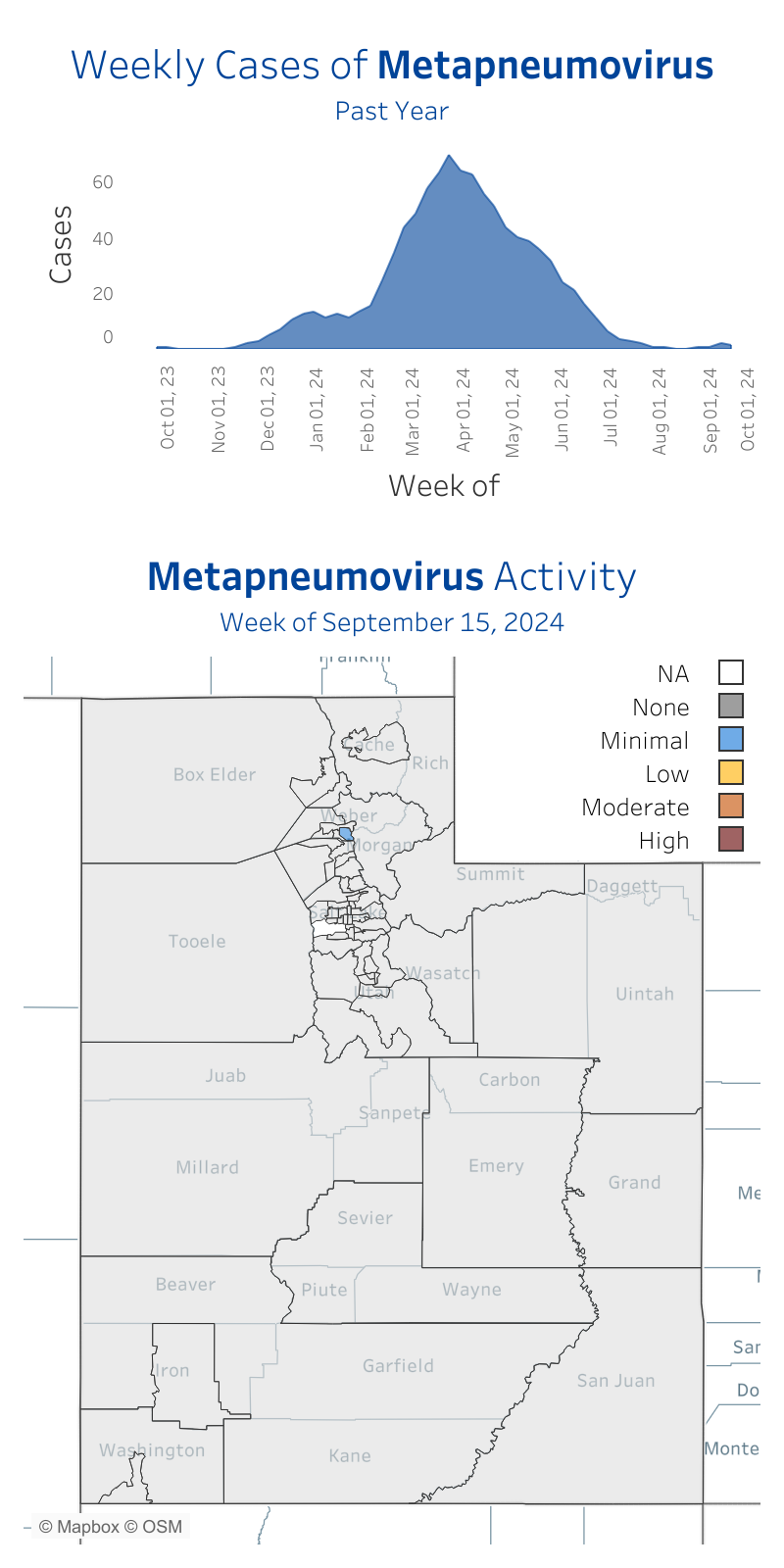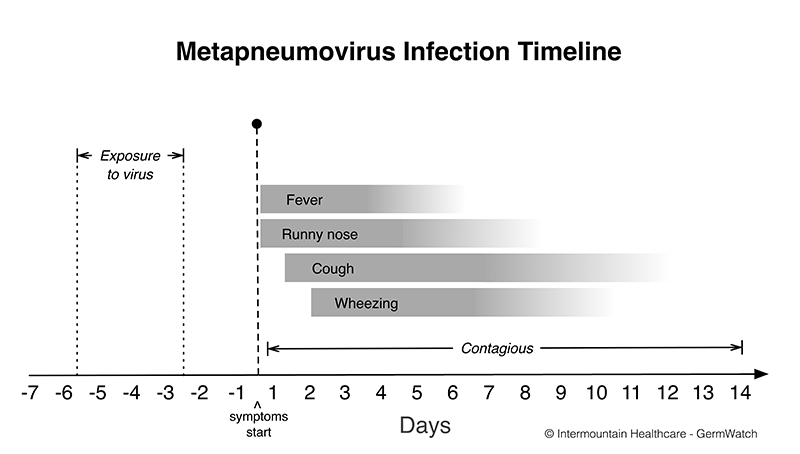Germ Profile
Also Known As: MPV; hMPV; human Metapneumovirus; Metapneumo
Germ Type: Virus
Season: Winter
The human Matapneumovirus (hMPV) virus usually causes mild, cold-like symptoms – or no symptoms at all. However, in some people, such as babies under a year old and older people with heart or lung disease, hMPV can lead to serious problems like bronchiolitis or pneumonia. Studies show that almost everyone has been infected by hMPV by age 5. Repeat infections in older children and adults are common and usually less severe.
Seasonality
In Utah, hMPV is most active in the winter. Its “season” usually peaks a month or two after RSV, another cold-weather virus.

Signs and Symptoms
An hMPV infection can cause cough, stuffy or runny nose, sore throat, and fever. A baby or young child with hMPV may feed poorly or be fussy, inactive, or sleepy. Serious infections can cause vomiting, diarrhea, and breathing problems. And in people with asthma, hMPV can cause a flare-up of asthma symptoms.
Infection Period
Symptoms of hMPV infection typically develop 3 to 5 days after being exposed to and getting infected with the virus. In otherwise healthy infants, the duration of viral shedding is 1 to 2 weeks.

How It's Spread
The hMPV is spread by direct contact with an infected person’s saliva or nasal secretions (usually sprayed out in tiny droplets from a cough or sneeze). The virus can also live on surfaces and materials (tables, handrails, doorknobs, toys, furniture). If you get coughed on or touch a contaminated surface – and then touch your eyes, nose, or mouth – you can get infected.
Diagnosis and Treatment
Although tests can detect influenza, most diagnoses are made on the basis of symptoms and physical exam.
Although testing can detect hMPV, most diagnoses are made on the basis of symptoms. Treatment for hMPV means managing the symptoms until the infection clears. However, bronchiolitis, pneumonia or other possible complications – like an asthma flare up – of hMPV infection may require medication and monitoring..
What can I do today?
1) Practice prevention and stop the spread:
- Wash your hands often and well, and have children do the same.
- Disinfect tables, toys, counters, and other surfaces regularly.
- Cover your sneezes and coughs.
- Use a tissue once, then throw it away and wash your hands.
2) Pay attention:
- When hMPV is going around, pay attention to any symptoms your baby may have. Most cases of hMPV illness are mild, but be on the lookout for more serious symptoms.
2) Call your child’s doctor if you notice:
- A harsh, barking cough (like a seal) that may signal croup.
- Wheezing (a whistling sound when breathing in or out).
- Fast breathing (more than 40 times a minute) or very difficult breathing (retractions, or using the stomach muscles when breathing).
- Signs of dehydration (dry mouth and eyes, little urine, low energy).
- Fever higher than 100.2°F in an infant 3 months or younger.
- Fever lasting longer than 3 days.
- Any other severe symptoms or symptoms that last longer than 7 days.
Disclaimer: The contents of this website are not intended to be a substitute for professional medical advice, diagnosis, or treatment.